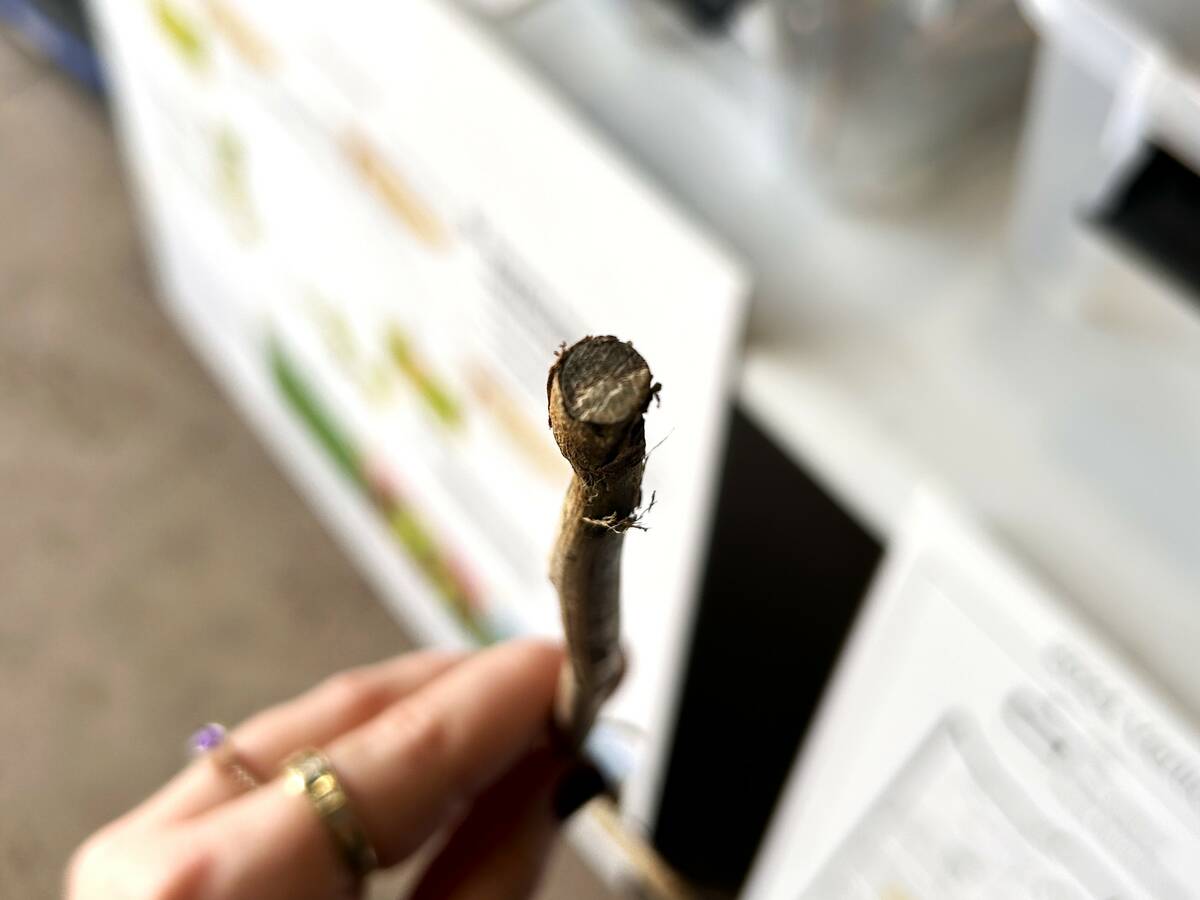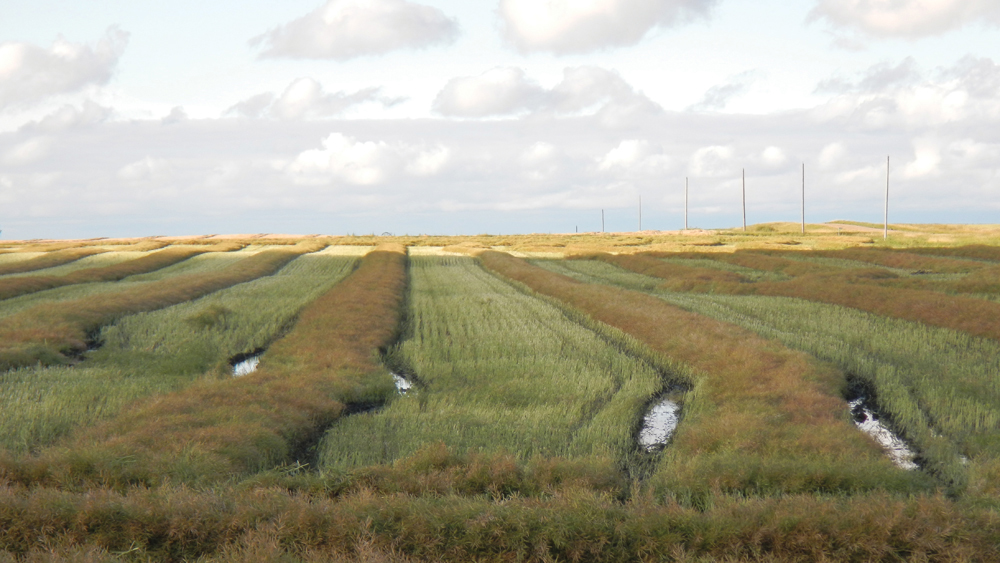While most Manitoba canola growers already have their crops in the bin, some producers have been caught by late-season precipitation, including snow.
“There is the odd field that is unharvested and most of those acres would be concentrated in the northern part of Manitoba — when we look farther south and east the vast majority of our canola crop has been harvested,” said Angela Brackenreed, an agronomy specialist with the Canola Council of Canada. “But in northern parts of Manitoba there were some snow events.”
Luckily for those producers, a return to seasonal temperatures has melted that northern snow, but growers are still left dealing with excess moisture, Brackenreed said.
Read Also

Manitoba canola embattled by verticillium
Verticillium stripe pressure has been growing in Manitoba, and canola farmers still have precious few tools to protect their crop from the disease.
“So now we can essentially view that snow as a normal precipitation event, which is good, because the trouble with snow, especially if that canola is trapped in a swath, is that it can be difficult to remove,” she said. “However, we still need to have it dry out and that can be difficult.”
For those who have just pulled swaths off the field or who intend to do so this week, safe storage will be the biggest concern. With shorter days and cooler temperatures, the agronomist said natural aeration may not be an effective option for producers looking to lower moisture levels.
“Air that is less than 10° has almost no capacity to dry at all and we do know for sure that any canola that is going to be taken off in the coming weeks is going to at least be damp — I’ve heard some examples of very damp — so obviously when we are up to moisture content that high it is extremely volatile and it needs to be managed almost immediately so we don’t see any spoilage in the bin,” she said.
If canola harvested early in the season comes in at 10 or 11 per cent moisture, it’s not much of a concern. High temperatures mean good drying days and natural aeration can bring that moisture level down without much concern, Brackenreed said, but added that isn’t the case by the time mid-October rolls around.
“The problem taking off canola now with that high moisture, is that there most likely isn’t going to be a good string of days for natural drying with natural aeration ahead,” she said. “And the moisture content that is safe for long-term storage is eight per cent.”
But there are steps producers can take to dry down damp canola.
“Really, first and foremost, a plan needs to be made prior to taking the canola off the field,” said Brackenreed. “It will be extremely volatile so you must have a plan, because things can get away from you really, really quickly if you don’t do something.”
The first thing producers can do is underfill their bins, if space allows.
“The problem with filling it to the top is that it is harder to aerate to those depths, so if we’re talking moisture content of 12 per cent, then by the time that aeration makes it to the top of the highest peak in the bin you could already see spoilage happening,” she said.
The next step is to keep your aeration fans running, even if the air outside the bins is too cool to actually aerate. Fans still keep temperatures uniform and can prevent hot spots.
“Also turn the bulk frequently,” Brackenreed added. “These are things we recommend all the time but they just become more and more important in these situations where moisture is high. Turning it can obviously help break up any potential hotspots that may be starting to form and can also help to even out some of those conditions, as well.”
If possible, Brackenreed advises the use of a supplemental heat source.
“If you have the ability to do this, this is probably your best friend at this stage in the game, because as I said, if that air is cooler than 10° it has very limited drying potential,” she said. “If you add heat to cool air it increases its water-holding capacity and therefore it can dry at that point.”
Air should be heated to between 15 C and 20 C with relatively low airflow rates, but nothing below 0.75 cubic feet per minute.
“I really think that supplemental heat is the best tool at producers’ disposal this time of year,” said Brackenreed. “If you have supplemental heat you’ll want to use it.”















